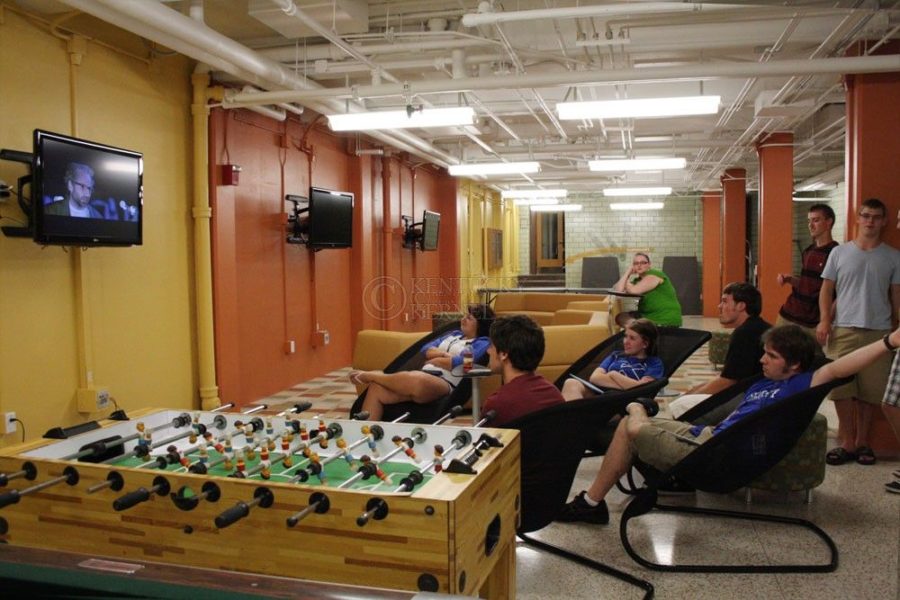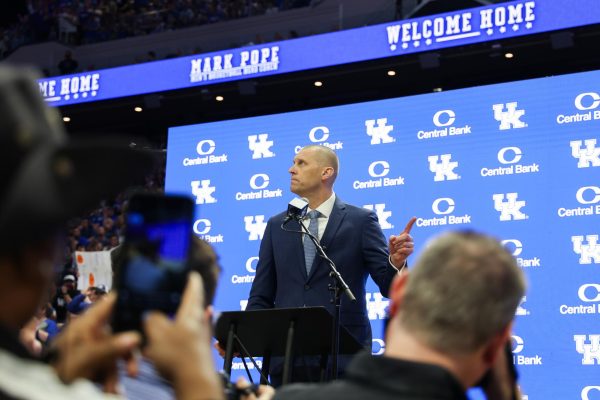Keeneland demolished two years after $600,000 in renovations
October 2, 2014
By Anne Halliwell
UK spent about $600,000 renovating Keeneland Hall in the summer of 2011, around two years before it was torn down this summer, estimated Ben Crutcher, the associate vice president for auxiliary services.
Crutcher said he was approached by the department of Arts and Sciences in 2011 as they searched for a building in which to house the Wired living-learning program.
Keeneland had about 340 rooms, Crutcher said, which fit the 300-student project, but needed some improvements before the students could move in the following fall.
“We were required to make some changes because some students who might be disabled might want to be part of Wired,” Crutcher said.
Two rooms were converted to accommodate students with disabilities, Crutcher said, and a concrete ramp was installed leading up to the door in front of the dorm. The lobby was also upgraded, with some new furniture and offices for Arts and Sciences faculty and staff installed.
The furniture used in Keeneland has since been redistributed to other buildings, Crutcher said. The rest of the updates were necessary ones and benefitted students for three years, argued Mark Kornbluh, dean of the College of Arts and Sciences.
“The College invested in educational equipment … desks, chairs, computers, displays,” Kornbluh wrote in an email to the Kentucky Kernel. “All of that was taken out of Keeneland before it has been destroyed and has been repurposed for other educational uses.”
The goal of the project was to optimize Wired students’ living-learning experience, Crutcher said.
The Arts and Sciences and Communications departments collaborated with UK Housing to finance the project, Crutcher said. The departments also improved networking in the building.
“(Keeneland had) a huge room in the basement that they liked because they could gather all the students in the living-learning community in one space,” Crutcher said. UK added one classroom to the basement as well.
Most of the construction happened when the 2011 students vacated the building in May, Crutcher said, and took place over the summer, with the lobby and basement taking the most time in those months.
“The ability to gather and work on collaborative projects was an important piece, I think,” Crutcher said.
Demolishing Keeneland, Holmes Hall and the Hamilton house cost about $2.3 million, Blanton said. The remainder of the North campus demolitions cost about $1.4 million more, he added.
The dorms on North campus needed renovations beyond what could have been afforded in 2011, Crutcher said, as the configuration of the rooms was no longer ideal for UK students. Housing decided about a year ago that Keeneland would be one of the buildings demolished over the summer due to the age of the building’s systems and unrenovated rooms, Crutcher said, leaving Roselle Hall, built in 2005, and Patterson Office Tower, which has historical significance.
Demolition on North campus should end this month, Crutcher added, and two new dorms should be constructed in Aug. 2016.
“Just because we spent some money in 2011 … (that) didn’t solve all the issues,” Crutcher said.
























































































































































